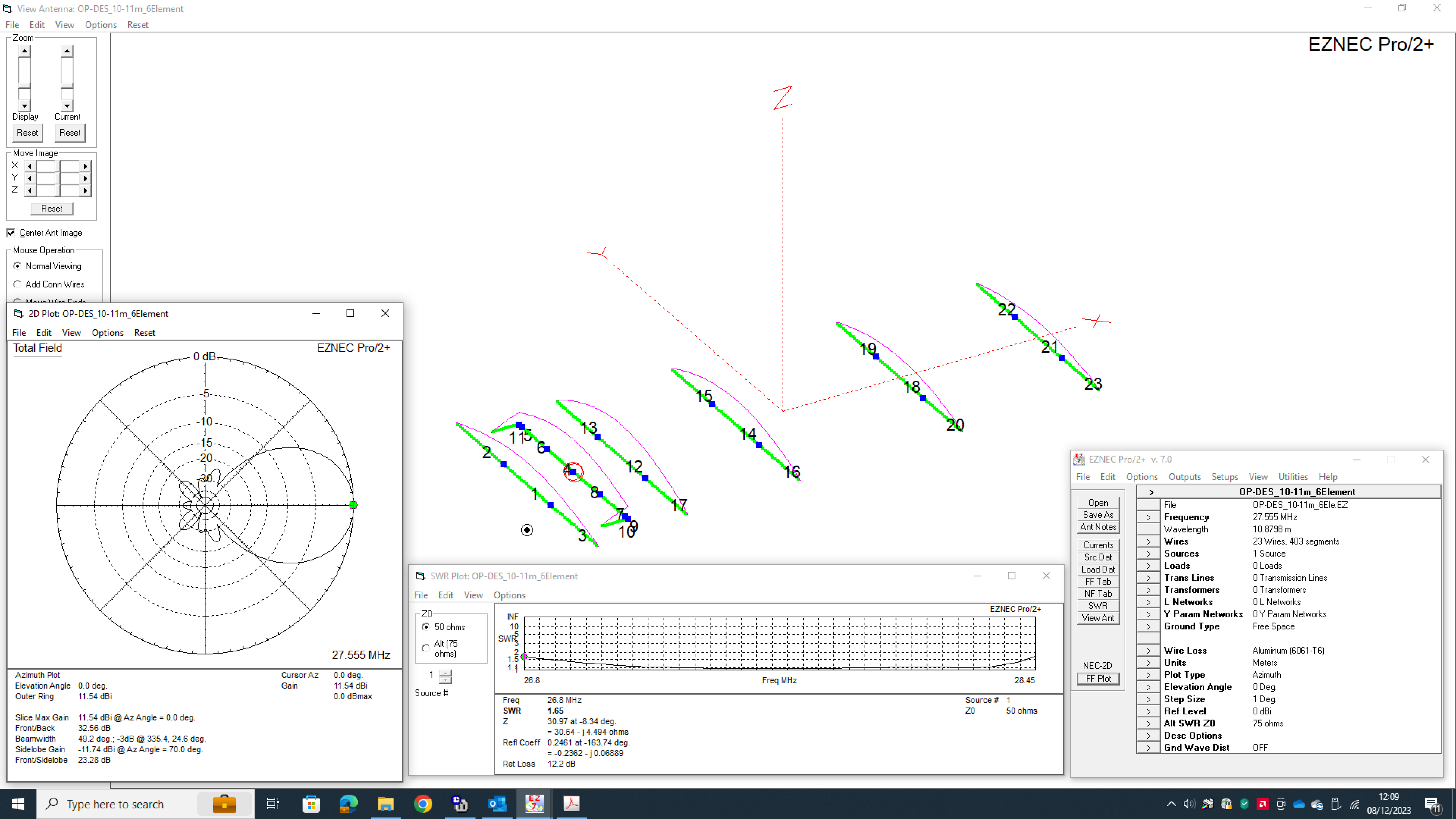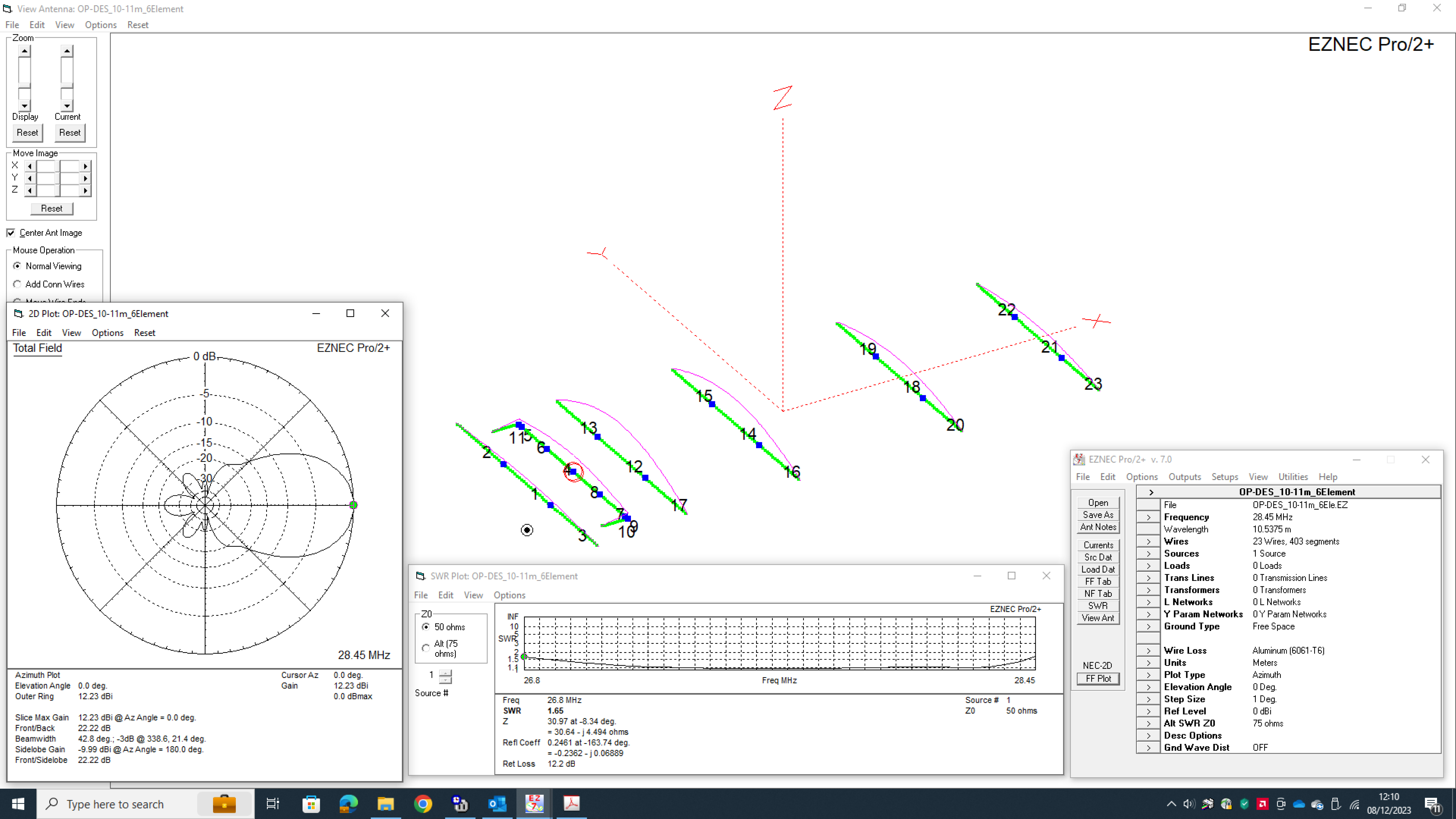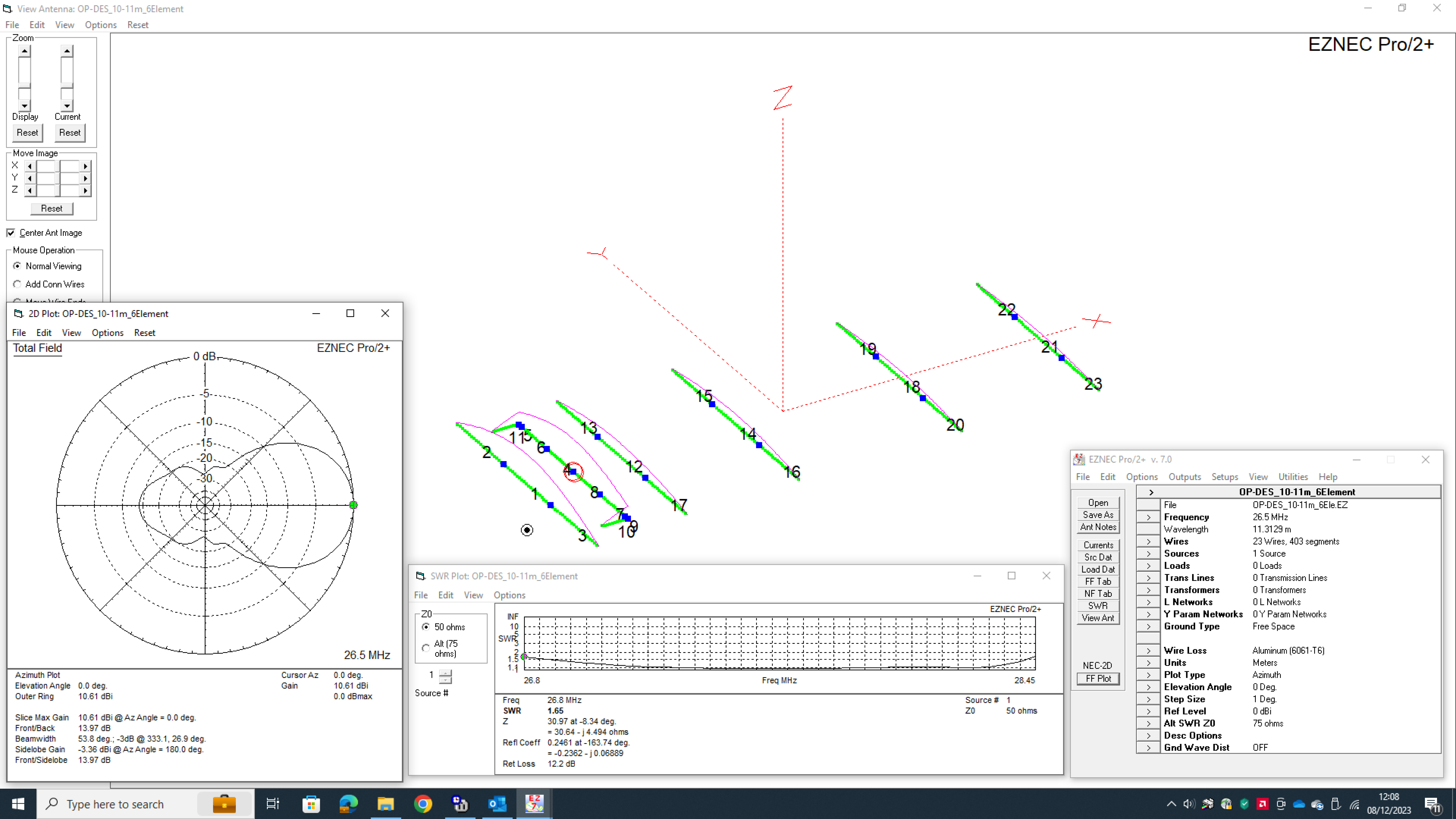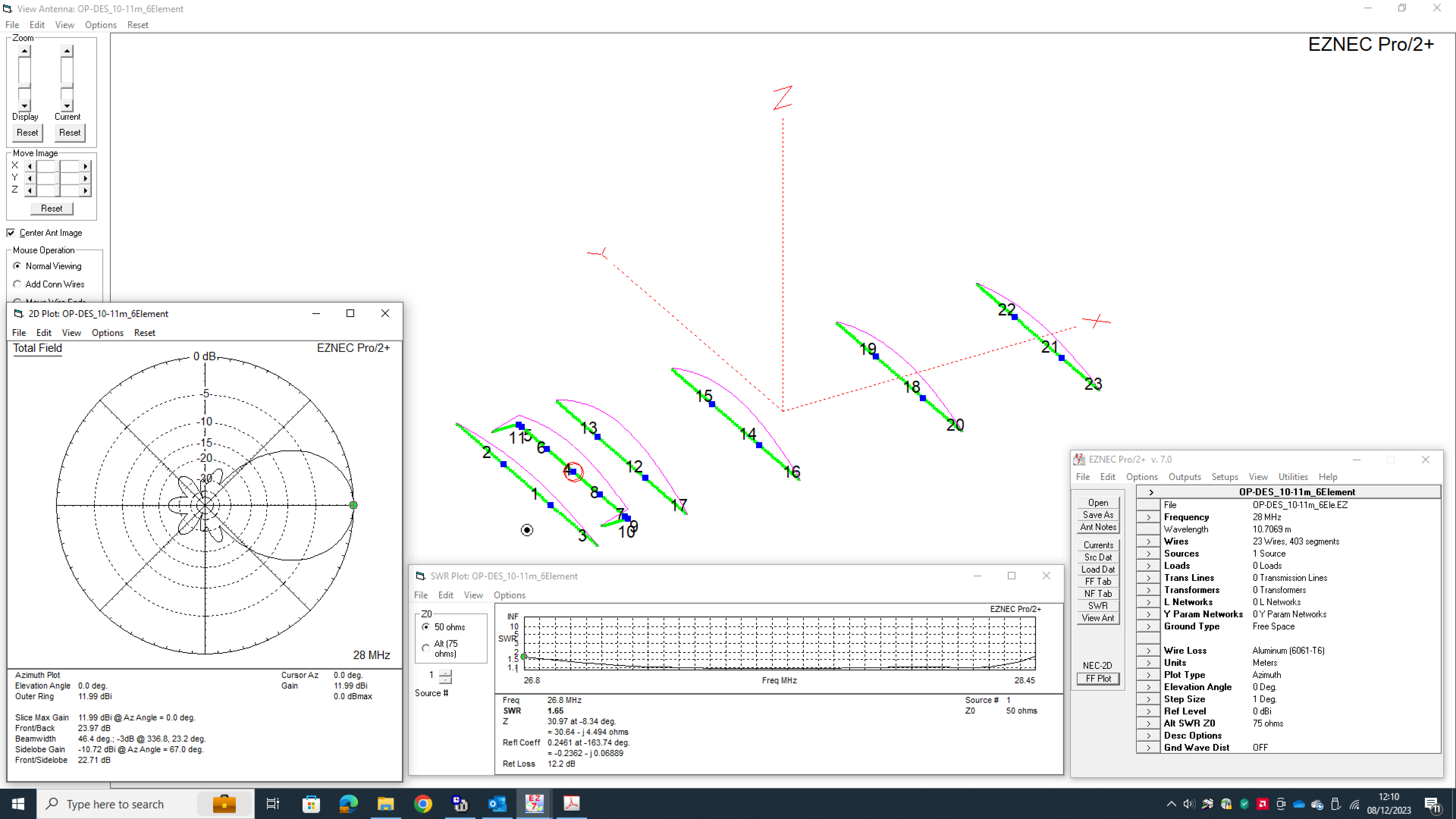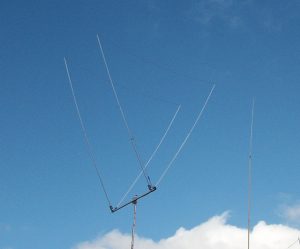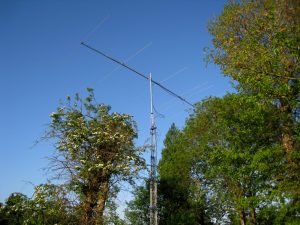A Powerful 10/11m Dual-band Solution
Here’s a project worth considering if you are looking for great gain and front-to-back with an antenna that covers more than the EZNEC model suggests.
Here’s a 10/11m broad-banded OP-DES [Opposing Phase Driven Element System] which is a derivative of the well-known OWA [Optimised Wideband Array]. In essence it’s a long-boom [11.25m] broad band antenna capable of covering well over 2.5Mhz at an SWR of under 2:1
For the main, the SWR is well under 1.5:1 across 2Mhz of coverage. This makes it ideal for those wishing to have the best of both 11 and 10m. The example shown here covers from around 26.300Mhz to around 28.500Mhz although the model suggests it only covers from the around 26.700mhz. In the real-world, it’s usable down to around 26.250mhz.
Builders can tweak the antenna easily to give higher coverage into 10m [at the cost of losing 200khz further down].
At 26.500Mhz the gain and pattern is acceptable [if not brilliant] but given the very little activity there, it offers at least some coverage here – still giving 10.60 dbi forward gain with a reduced front-to-back ratio. Real-world SWR readings at this frequency are around 1.4 to 1.
Moving into the sweet spot of 27.555Mhz, the antenna performs extremely well as a 6-element long boom OP-DES with a forward gain of 11.54dbi and a front-to-back ratio of well over 30db.
For builders using the lower half of 10m and into the 10m SBB section, the gain pumps out over 12.20dbi and with a front-to-back of still 20db+. At around 28.500 the SWR begins to climb quite rapidly but we found generally that most 10m activity is below ‘500’.
For 10m aficionados, you could reduce the end tips of ALL elements by 2cms. This would drive the antenna up the band by about 200-300khz giving enhanced 10m coverage at the expense of a slightly reduced coverage in the lower-mid part of 26mhz.
All-in-all, this is an extremely powerful 10/11m solution.
Download the EZNEC file here
Download a data sheet here [just follow the data and build – no EZNEC file needed]

